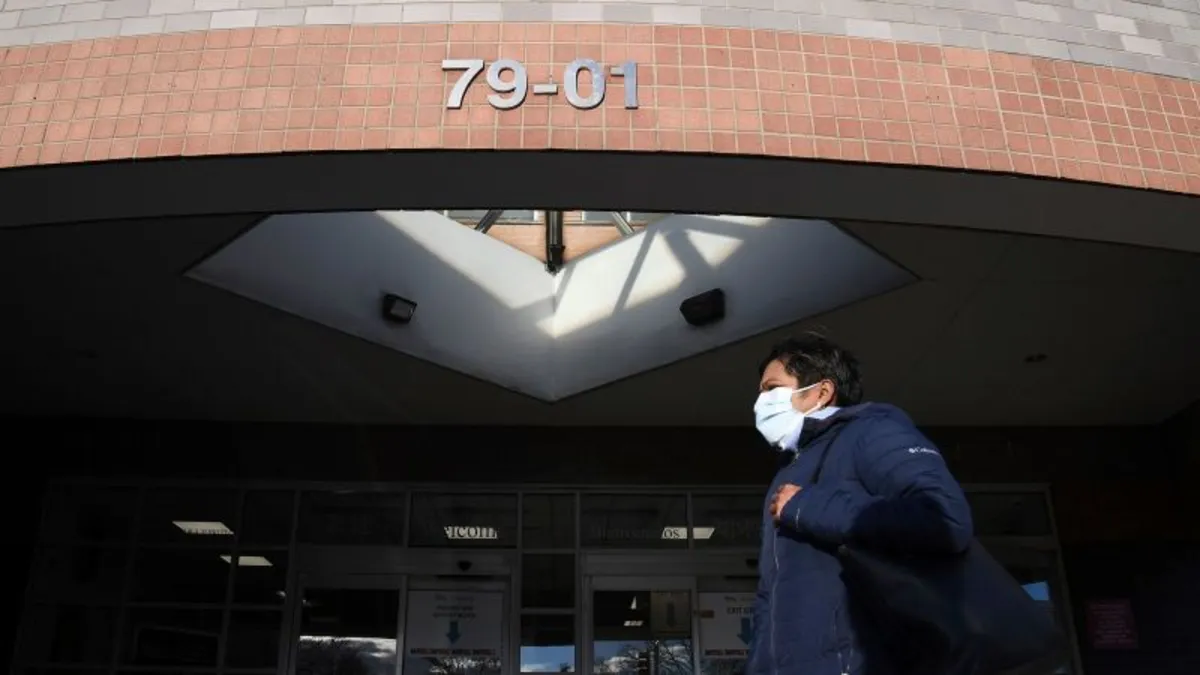
The ongoing federal government shutdown has significantly disrupted the national level of respiratory virus surveillance, leaving local governments, health systems, and the general public in a precarious position as the respiratory virus season begins to escalate. Key federal reports focusing on influenza, COVID-19, and RSV (Respiratory Syncytial Virus) have not been updated for nearly a month, despite an increase in viral activity. Each year, these viruses claim the lives of tens of thousands of individuals in the United States and result in hundreds of thousands of hospitalizations. Unlike fast-spreading diseases such as measles, these respiratory viruses typically adhere to seasonal patterns.
During a government shutdown, updates to national disease surveillance reports occur only if they are deemed necessary to “protect from imminent loss of life,” explains Dr. Caitlin Rivers, an epidemiologist and director at the Center for Outbreak Response Innovation at the Johns Hopkins Bloomberg School of Public Health. While the CDC's response to measles is classified as an “active public health intervention,” the shutdown severely restricts the CDC’s ability to provide routine updates on flu data from public health partners.
The US Centers for Disease Control and Prevention (CDC) last updated its general Respiratory Illness Data Channel on September 26, just before the shutdown commenced. This channel provides critical insights into viral activity through early warning signs such as wastewater surveillance and emergency department visits. Furthermore, weekly updates from the specific FluView program have ceased, along with summary reports from RESP-NET, which tracks hospitalizations for COVID-19, flu, and RSV across a national network of hospitals.
According to the latest CDC respiratory disease season outlook for 2025-26, the country is likely to experience a similar number of peak hospitalizations due to COVID-19, influenza, and RSV compared to the previous season. Last year, the CDC estimated between 610,000 and 1.3 million flu hospitalizations, alongside up to 130,000 flu-related deaths. There were also hundreds of thousands of COVID-19 hospitalizations, resulting in between 44,000 and 63,000 deaths.
Dr. Rivers likens the situation to a lack of weather or traffic reports for those managing their health. In response to inquiries regarding how the federal government is navigating public awareness about respiratory virus risks during the shutdown, the Department of Health and Human Services (HHS) indicated that the shutdown may delay responses.
Some data collection continues at the state level, with states reporting to the CDC, and this information is often made available through state dashboards. However, experts argue that a coordinated national assessment of trends is crucial for preparedness, and this has been compromised. Dr. William Schaffner, an infectious disease expert at Vanderbilt University, emphasizes that “communication is the single most important aspect of any response.” A lack of information hampers effective communication with both health professionals and the public.
RSV, for example, tends to follow a predictable seasonal pattern, with viral activity beginning in southern states and progressing northward. Currently, Florida is experiencing rising RSV activity, with two outbreaks reported in the southeastern region. Without national coordination, other states may miss crucial trends and cues historically used for their own responses.
The unpredictability of each flu season necessitates national data analysis to provide a clearer outlook. Dr. Schaffner notes, “It’s the old scouting motto, ‘Be prepared.’” Access to critical data allows healthcare facilities to prepare for upcoming patient influxes, enabling them to anticipate staffing and supply needs. National surveillance also plays a vital role in capturing comprehensive data on circulating virus variants, helping to identify potential threats if vaccine efficacy is compromised.
However, the shutdown poses risks to laboratory testing capacities and expert guidance for analyzing local trends. The absence of visibility on emerging threats raises significant concerns, especially as many CDC researchers will miss IDWeek, the largest annual meeting of infectious disease experts in the country, due to the government shutdown.
Many individuals rely on federal respiratory virus information to manage their health decisions, particularly when traveling during the holiday season. Dr. Anne Zink, former chief medical officer for Alaska, highlights that epidemiologists often time their flu vaccinations based on the latest data trends. “Protection from the flu vaccine doesn’t last long, so timing is critical,” she explains, underscoring the need for accessible data for informed decision-making.
Despite the challenges, state and local health departments continue to update respiratory virus dashboards, allowing for some tracking of respiratory virus trends. Dr. Rivers compiles publicly available data weekly in her newsletter. Meanwhile, Dr. Zink has played a role in launching the Population Health Information and Visualization Exchange (PopHIVE) at the Yale School of Public Health, which aims to integrate public and private health datasets for a more thorough, real-time understanding of health trends.
Dr. John Brooks, an infectious disease physician, asserts that a brief lapse in surveillance can be manageable, but certain data and surveillance gaps cannot be effectively bridged without cohesive national efforts. Diseases that spread rapidly, such as flu, require consistent monitoring, making timely data essential.
The consequences of the government shutdown on respiratory virus surveillance were anticipated, but the post-shutdown actions of the government will be crucial. Dr. Demetre Daskalakis, former director of the CDC’s National Center for Immunization and Respiratory Diseases, warns that the catch-up process after a shutdown can be slow and costly, potentially leading to delays in crucial data reporting.
As trust in public health continues to be a concern, experts agree that timely access to accurate data is vital for effective communication and outbreak management. Clear communication not only aids healthcare professionals but also builds public trust, which is essential for a healthy response to emerging threats.